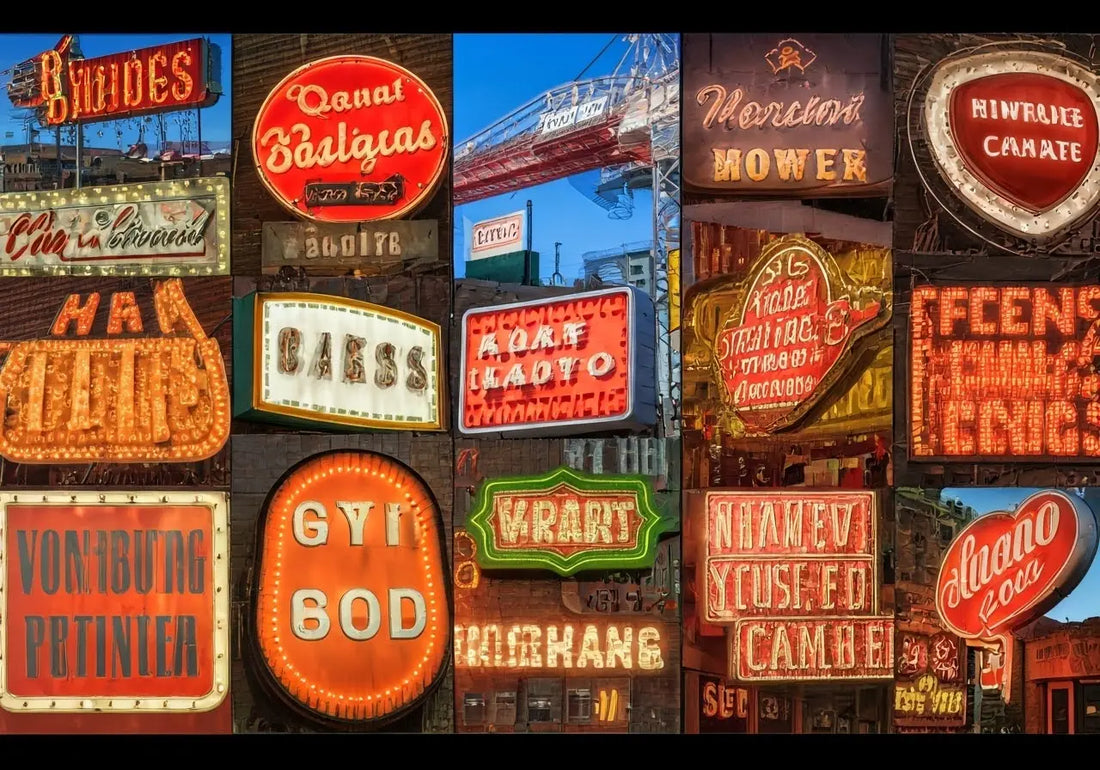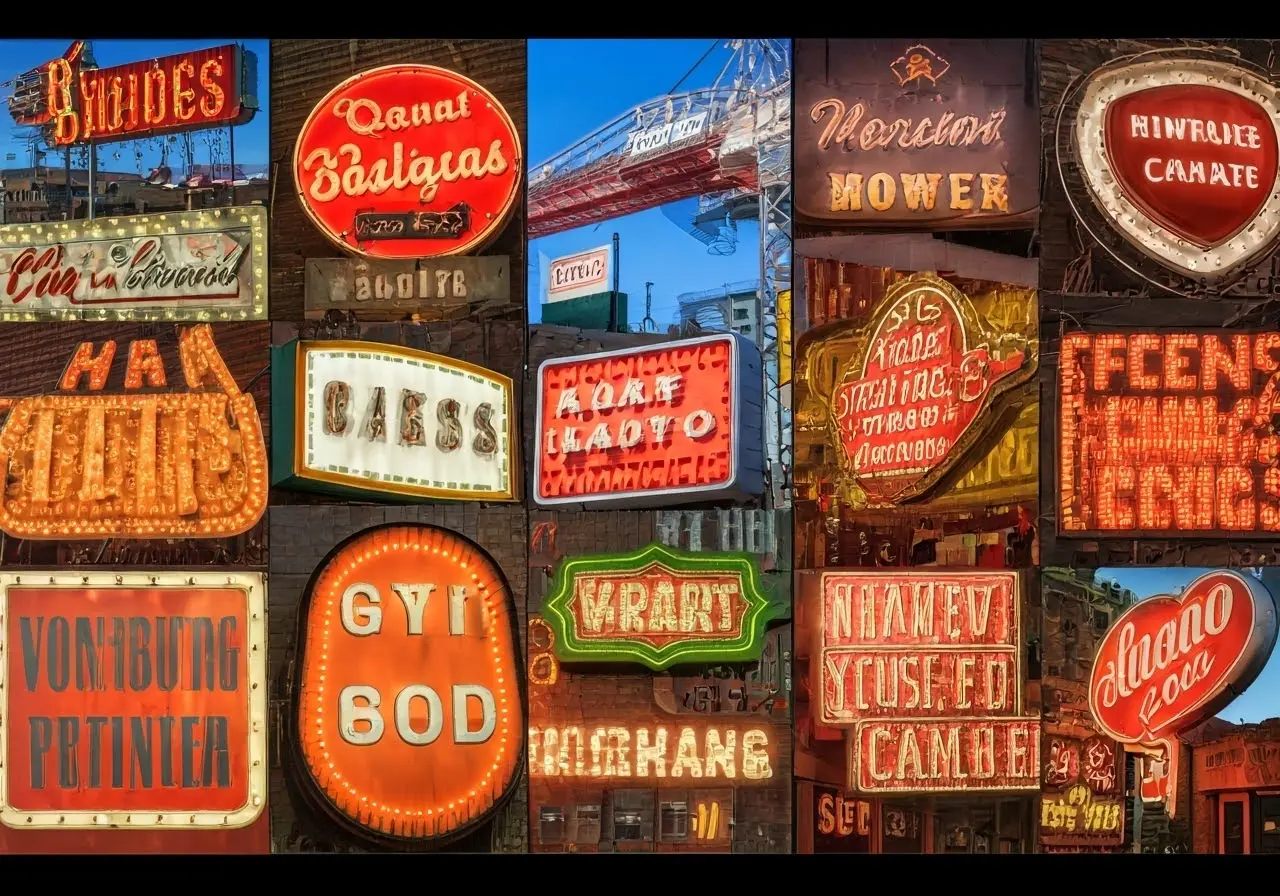
Understanding the Evolution of Business Signs in Modern Advertising
Share
Business signs have been a cornerstone of advertising for centuries, guiding customers and establishing brand presence. Yet, with the rapidly evolving business landscape, these signs have transformed significantly in their design, purpose, and technology. This blog dives into the fascinating evolution of business signs and how they continue to impact modern advertising.
The Origins of Business Signs
From ancient Egyptian stone carvings to medieval guild signs, business signs play a pivotal role in communicating products and services to potential customers. These early signs were primarily symbolic, relying on shapes and icons to convey messages since literacy wasn’t widespread. For instance, innkeepers often employed images like beer mugs to denote taverns or hospitality. The use of these icons speaks to the historical reliance on #visual communication, which persists in modern signage’s essence. Over time, written elements like text and slogans were integrated, becoming prevalent as literacy rates increased. This gradual incorporation of text expanded the possibilities for conveying messages and enhanced trust between businesses and their patrons.
In ancient Rome, business signs were not just functional but displayed craftsmanship and artistry. Shops situated along busy Roman streets distinguished themselves with carved wooden or wrought iron signs depicting their trade, such as a cobbler’s boot or a butcher’s pig. Such distinct signage helped shape the fledgling concept of branding. As we moved through the centuries into the medieval period, guild signs continued this tradition, often crafted in vivid colors to catch the eye of bypassers across bustling markets and cobblestoned streets.
The Rise of Iconic Signage in the 20th Century
The 20th century was marked by technological evolution, which led to the birth of electric signs and their transformative impact on urban landscapes. Imagine the vibrant colors of neon signs lighting up Times Square or Tokyo’s Shibuya Crossing. These glowing beacons became synonymous with bustling metropolitan life, embodying a blend of art and commerce. Business signs during this era not only served their traditional purpose but also emerged as cultural landmarks. Iconic signs such as ‘Hollywood’ and ‘Welcome to Las Vegas’ began to represent more than just advertisements—they embodied the cultural zeitgeist of the cities they illuminated.
Neon signs, in particular, saw a massive surge in popularity, mainly because their ability to glow in a variety of colors captivated people’s attention even from afar. By the mid-20th century, neon signs weren’t just limited to big cities. They expanded into small towns across America, enhancing the visibility of diners, motels, and movie theaters. This proliferation of neon signage created a new sense of place and nostalgia that continues to evoke fascination today.
Digital Transformation in the Sign Industry
In recent decades, digital technology has completely transformed the sign industry by introducing dynamic displays that engage customers like never before. LED technology, a pivotal player in this transformation, has offered endless possibilities with its capacity for brightness, customization, and energy efficiency. According to True Tech Signs, LED signs represent modern advertising at its best, providing eye-catching graphics that capture the attention of anyone who passes by. Their longevity alone, which can reach up to 50,000 hours, reduces the need for frequent replacements and cuts maintenance costs substantially. This makes LED signs not only a flashy option but also a cost-effective one.
The flexibility of digital signs goes beyond their physical attributes. With the capability to display continuously updated content, businesses can keep their messaging relevant and fresh. Unlike static signage, digital signs bring endless possibilities—think live feeds, interactive advertising, and real-time promotions. This evolution aligns with the increasing demand for more personalized and engaging consumer experiences, highlighting why digital displays have become an indispensable part of today’s urban settings.
Integrating Branding with Business Signage
Today, successful branding is more crucial than ever for businesses, and signage plays a pivotal role in this endeavor. Modern business signs have transcended their traditional purpose of merely marking a location. They are now an extension of the brand’s identity, crafted meticulously to communicate core messages and ethos. By integrating visual elements such as logos, colors, and even ambient lighting into their signs, companies create an immediate, recognizable image that aligns with their branding strategy. LED Signs have particularly made it easier for businesses to customize and control every aspect of their messaging, ensuring that every passerby receives a consistent brand experience.
The Role of Business Signs in Digital Marketing
Despite the surge in digital marketing, physical business signs remain an effective bridge to real-world brand interaction. While online platforms allow businesses to reach a global audience, signs solidify their presence in the physical realm, offering brands an opportunity to capture the everyday foot traffic. This dynamic blend of physical and digital strategies forms a holistic marketing approach that enhances customer interaction at every step. When combined with cutting-edge technologies, like QR codes or NFC technology, physical signs can seamlessly lead potential customers online, linking them to product pages, promotions, and more. This integrated tactic leverages the instantaneous nature of digital marketing while reaffirming brand presence in physical spaces.
Sustainability and the Future of Business Signs
In today’s environmentally conscious world, businesses are increasingly seeking ways to reduce their ecological impact, and signage is no exception. Adopting sustainable practices has become a priority, and innovative solutions such as energy-efficient materials and eco-friendly processes are paving the way forward. One significant shift in this realm is the move towards LED signs, celebrated for their minimal energy consumption and long life spans. Compared to traditional lighting solutions, LEDs consume far less power, thus reducing carbon footprints. Hopefully, as greener options become more accessible and affordable, they will encompass all types of business signs, making them cost-effective and eco-friendly.
Evaluating how future developments in digital technology could further contribute to sustainable signage practices is also essential. Advances in solar-powered solutions, recyclable materials, and biodegradable lightings could revolutionize the industry, meeting both environmental and business needs. As we continue to build toward a greener planet, the future of business signs lies not only in creating captivating displays but also in their ability to harmonize with the sustainability goals set forth for the coming decades.
The Future of Business Signs
As we have seen, business signs have journeyed from being simple, static markers to becoming dynamic and interactive communication tools. Their evolution mirrors the changes in technology and consumer behavior, highlighting the importance of adapting to new trends. Businesses that stay ahead of the curve and embrace innovation will continue to thrive in the competitive advertising landscape.

